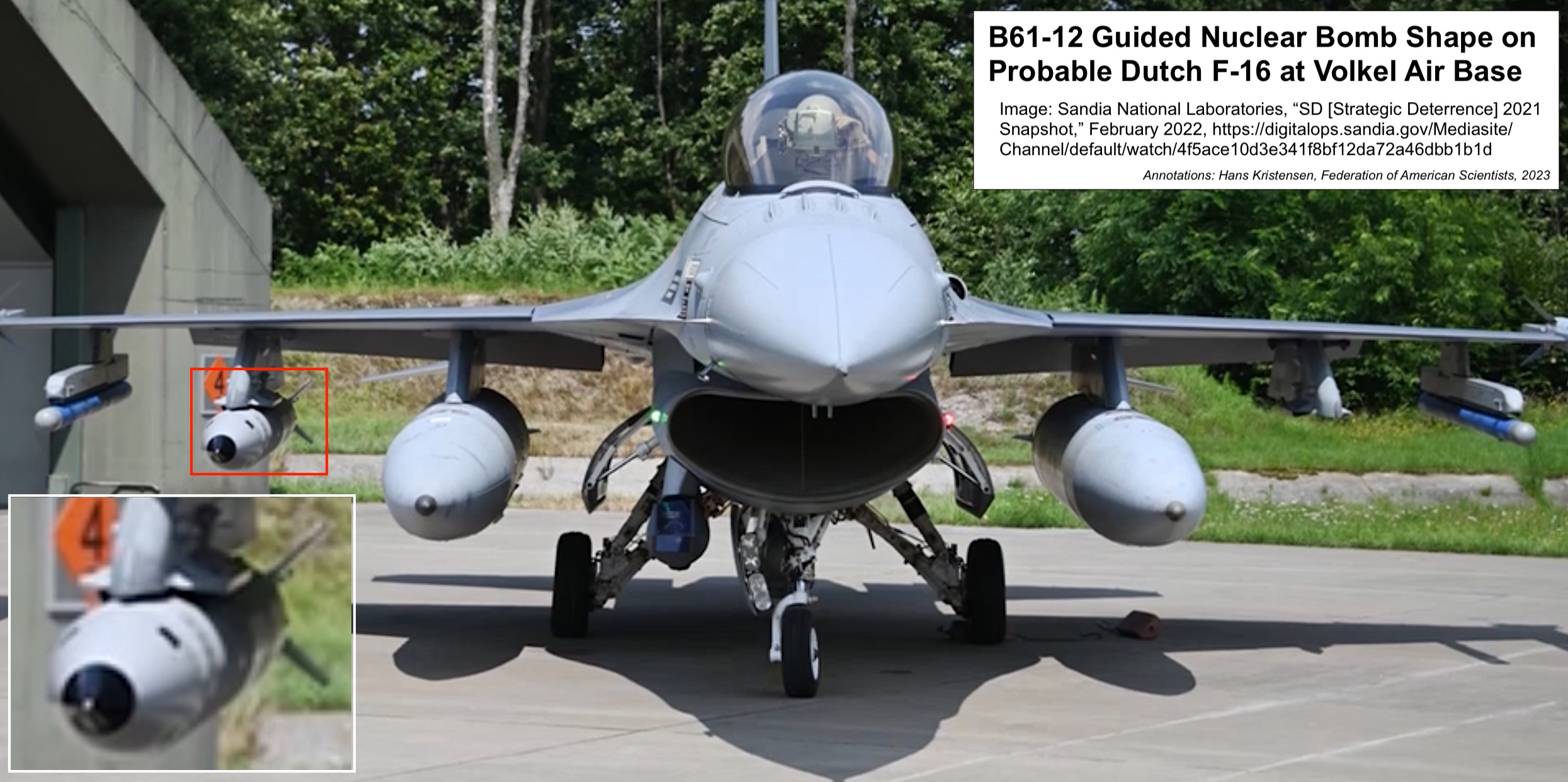
New Nuclear Bomb Training At Dutch Air Base
The Dutch air base at Volkel appears to have started integration training with the new U.S. B61-12 guided nuclear gravity bomb in 2021, even before the bomb went into full-scale production and entered the U.S. stockpile in 2022.
An image included in a Sandia National Laboratories video from early-2022 that snapshots accomplishments from 2021 shows what appears to be a B61-12 training shape hanging under the right wing of an F-16 (see image below).

The Dutch air force apparently started training for the new U.S. B61-12 guided nuclear bomb in 2021.
The video does not not identify the location but the image appears to be from Volkel Air Base in the Netherlands; The design of the protective aircraft shelter visible in the photo is unique to Dutch shelters. Eleven of the shelters at the Volkel are equipped with an underground vault that can hold up to four B61 bombs. But normally they only hold 1-2 bombs each for an estimated 10-15 bombs at the base. A picture posted on a public forum shows the outline of a vault inside a Protective Aircraft Shelter at Volkel Air Base (see below).
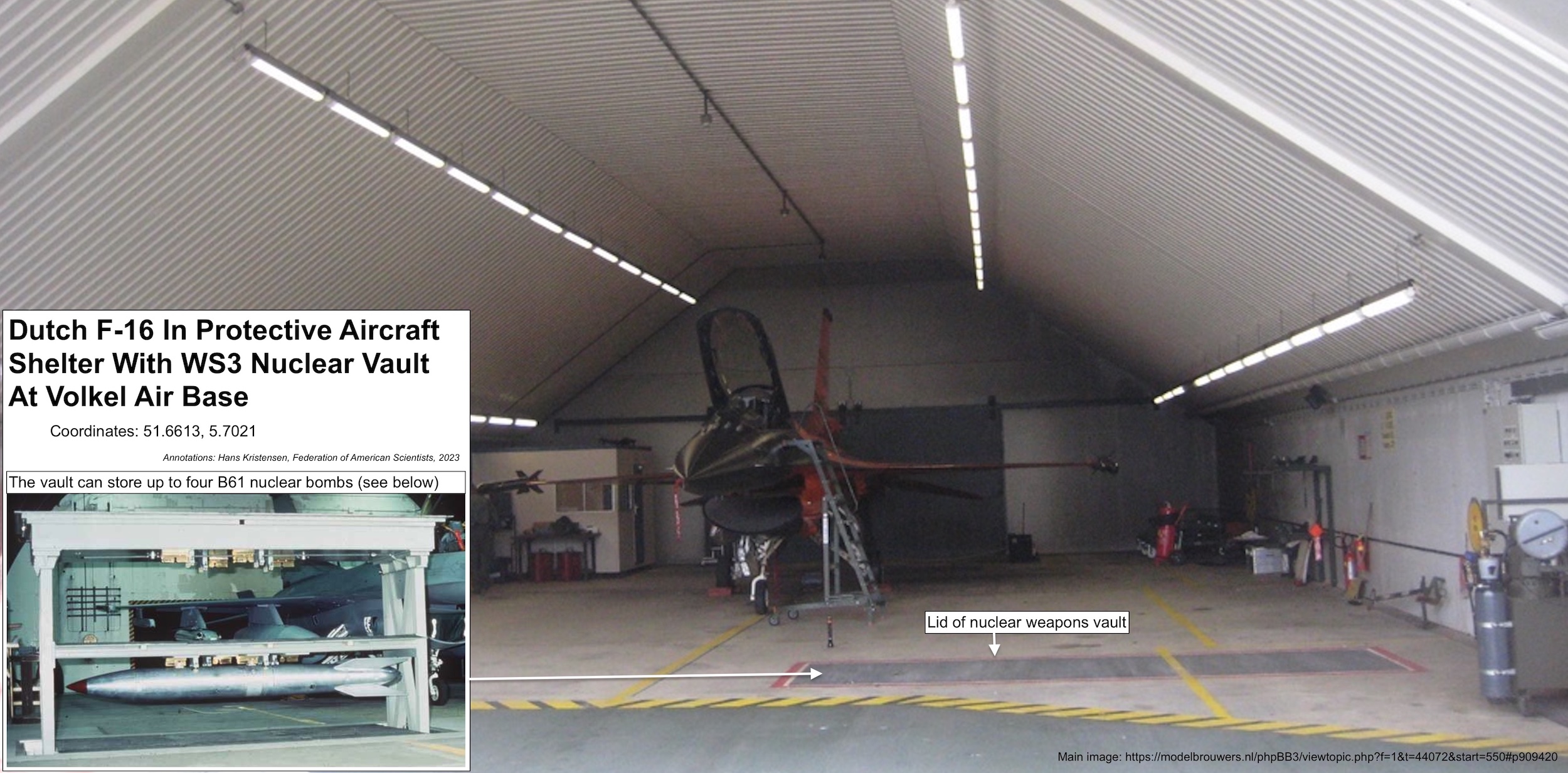
Eleven aircraft shelters at Volkel are equipped with an underground nuclear weapons storage vault.
Although the training B61-12 is mounted on an F-16, the weapon is not yet assigned to the NATO fighter jets. The B61-12 has entered the U.S. nuclear weapons stockpile, but it is so far only assigned to the B-2 strategic bomber, according to the U.S. Department of Energy. The fighter jets (F-15E, F-16, Tornado) have completed integration flights but had, as of recently, not yet been assigned the B61-12 (see table below). The new F-35A that will take over the nuclear strike role at Volkel and other European bases had also not been assigned the B61-12 yet, but U.S. European Command training was scheduled to start in 2023.
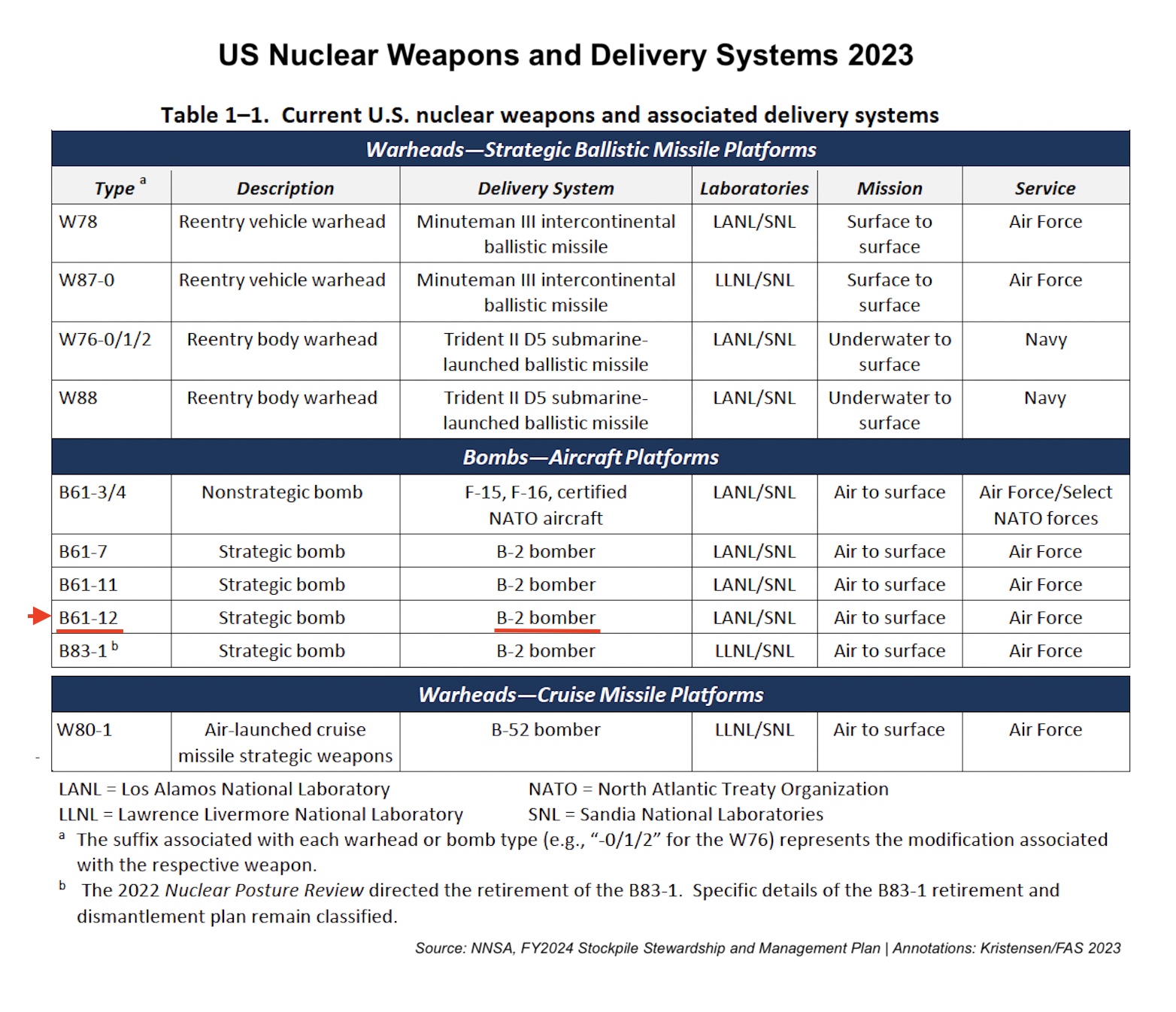
The new B61-12 nuclear bomb had, until recently, only been assigned to the B-2 strategic bomber not yet to dual-capable fighter aircraft.
The 312th Squadron of the 1st Wing at Volkel Air Base is part of the so-called NATO nuclear sharing arrangement where the United States equips Dutch F-16s (and aircraft of five other NATO countries: Belgium, Germany, Greece, Italy, Turkey) and trains their pilots to employ U.S. B61 nuclear bombs in war. During peacetime, the weapons are under the custody of U.S. Air Force units (the 703rd Munitions Support Squadron (MUNSS) at Volkel).
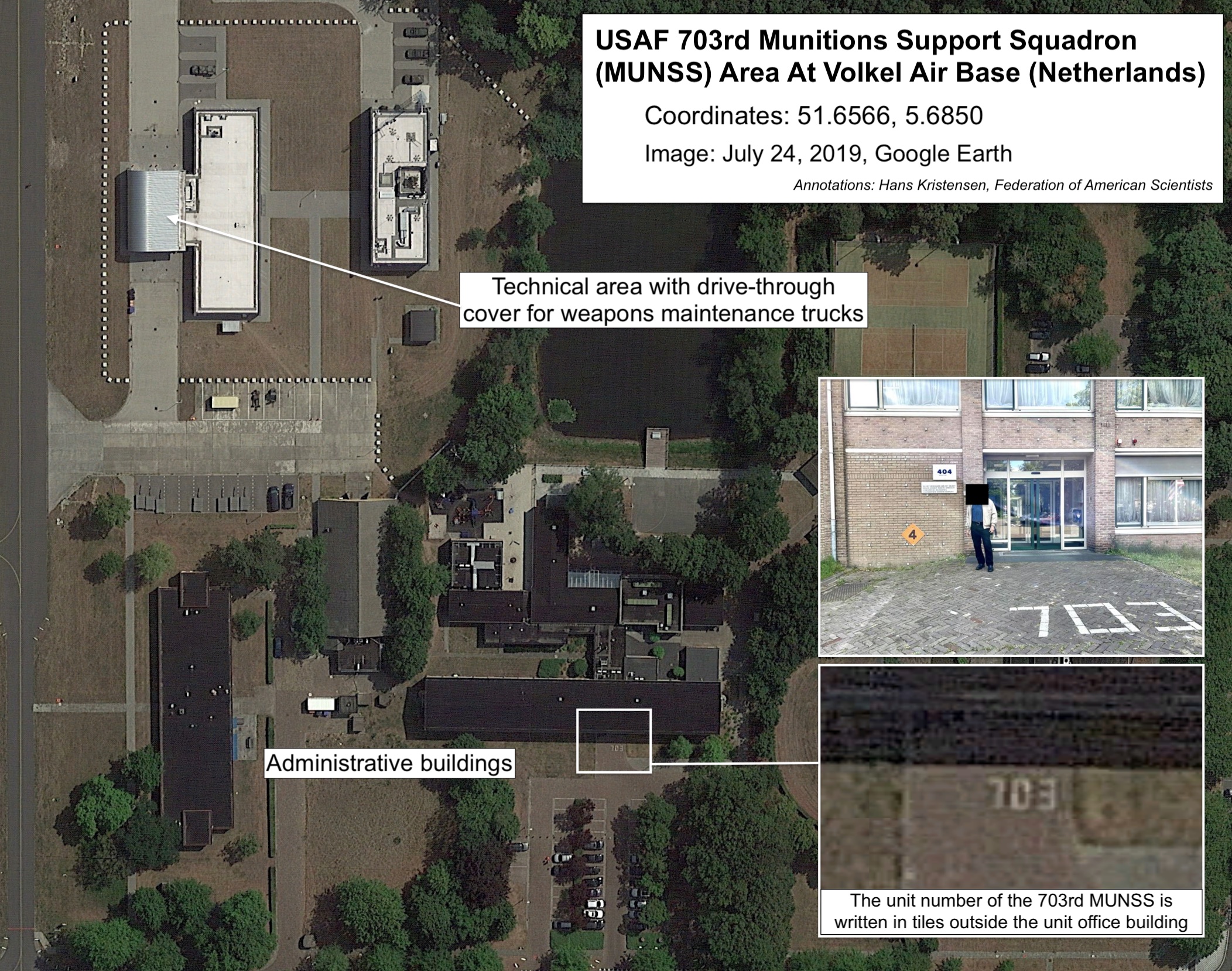
The location of the USAF nuclear weapons custodial unit at Volkel Air Base is written in tiles.
On December 8, 2023, the 312th Squadron performed what is known as an elephant walk where 14 F-16s were displayed on the runway at the same time. A similar display was performed in 2021. At least one of the pilots in the 2023 event can be seen wearing a helmet visor with a nuclear weapons explosion mushroom cloud (see image below). It is possible, but unknown, that this is the helmet of the commander of the 312th Squadron.
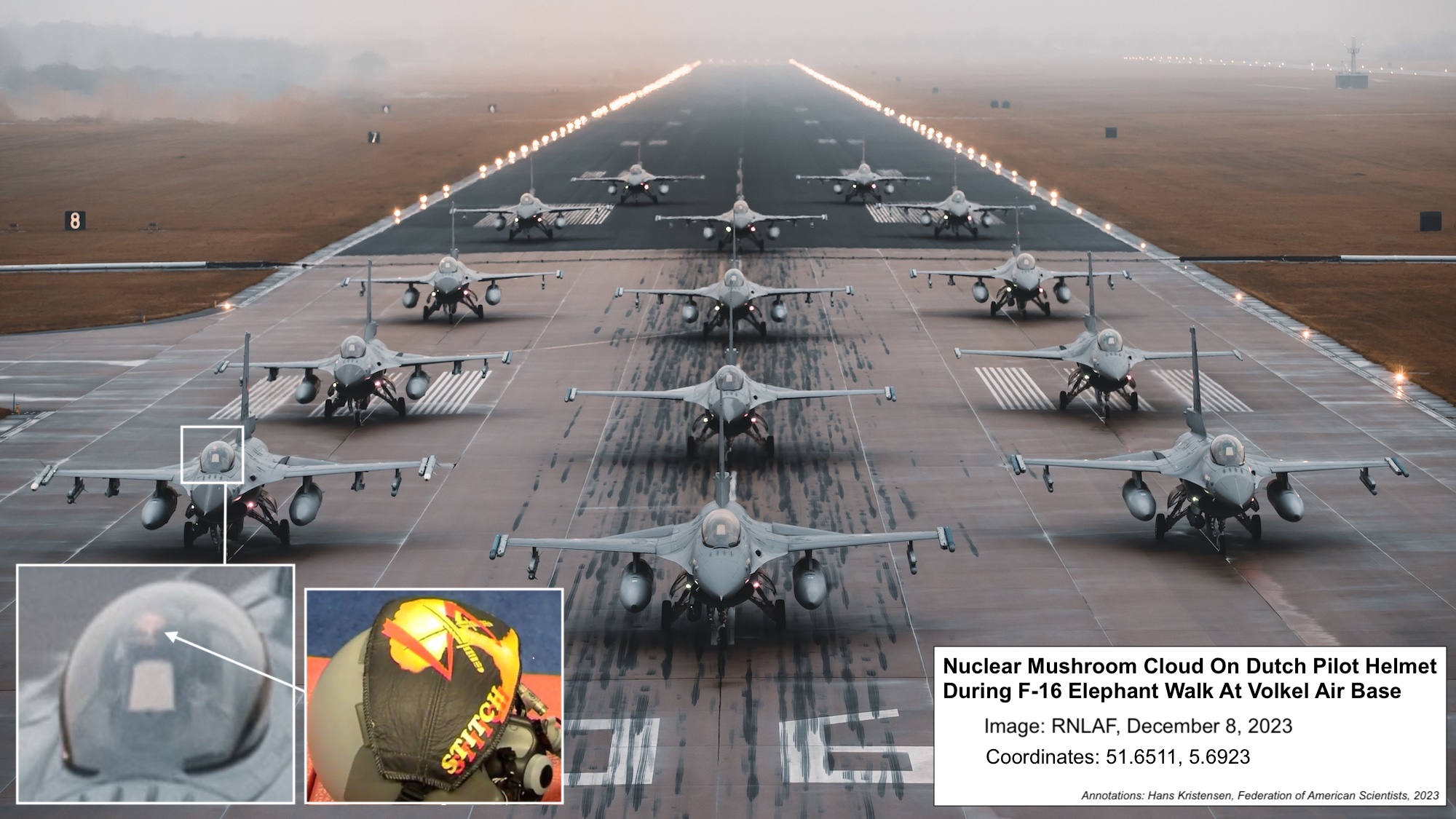
One of the pilots in the December 2023 elephant walk at Volkel Air Base wore a nuclear mushroom cloud design on his helmet visor.
The nuclear weapons upgrade at Volkel Air Base is part of a broad nuclear modernization program of U.S. non-strategic nuclear forces in Europe that includes replacement of aircraft, bombs, base infrastructure, nuclear command and control, readiness level, operational planning, and public visibility.
There is no public information that the B61-12 bombs have been shipped to Europe yet but the C-17A nuclear transport aircraft has been cleared and the first shipments could potentially begin next year. If so, they would replace the estimated 100 B61-3/4 nuclear bombs currently deployed in Europe (see figure below).
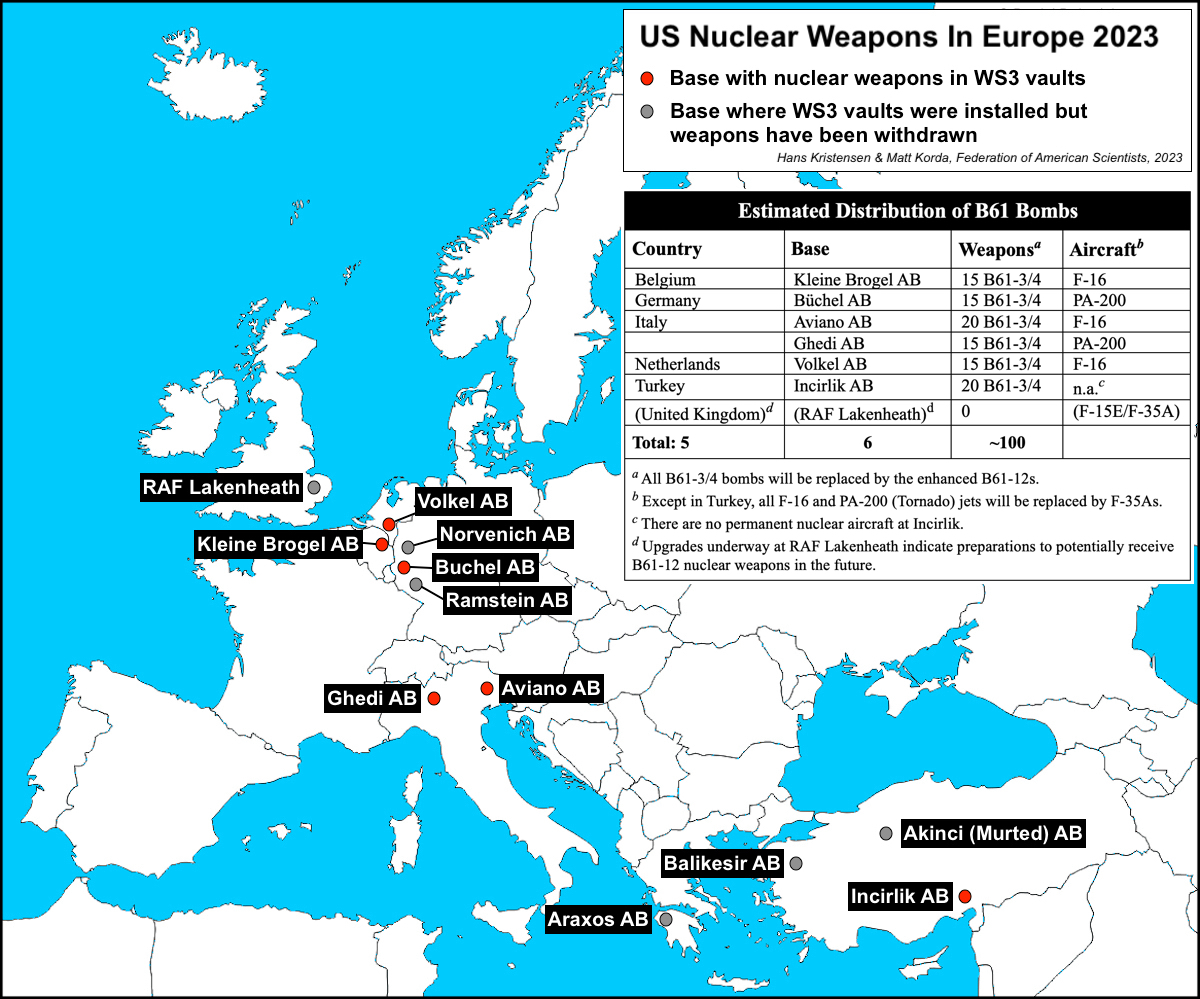
Additional information:
• Nuclear Notebook: Nuclear Weapons Sharing, 2023
• Increasing Evidence That The US Air Force’s Nuclear Mission May Be Returning To UK Soil
• The C-17A Has Been Cleared To Transport B61-12 Nuclear Bomb To Europe
• NATO Steadfast Noon Exercise And Nuclear Modernization In Europe
This publication was made possible by generous contributions from the New-Land Foundation, the Ploughshares Fund, the Prospect Hill Foundation, Longview Philanthropy, the Future of Life Institute, Open Philanthropy, and individual donors. The statements made and views expressed are solely the responsibility of the author.
The FY2026 National Defense Authorization Act (NDAA) paints a picture of a Congress that is working to both protect and accelerate nuclear modernization programs while simultaneously lacking trust in the Pentagon and the Department of Energy to execute them.
While advanced Chinese language proficiency and cultural familiarity remain irreplaceable skills, they are neither necessary nor sufficient for successful open-source analysis on China’s nuclear forces.
Satellite imagery has long served as a tool for observing on-the-ground activity worldwide, and offers especially valuable insights into the operation, development, and physical features related to nuclear technology.
This report outlines a framework relying on “Cooperative Technical Means” for effective arms control verification based on remote sensing, avoiding on-site inspections but maintaining a level of transparency that allows for immediate detection of changes in nuclear posture or a significant build-up above agreed limits.